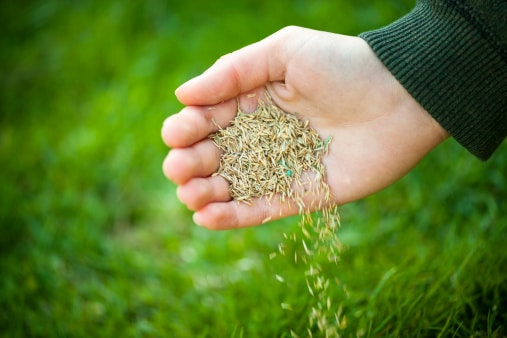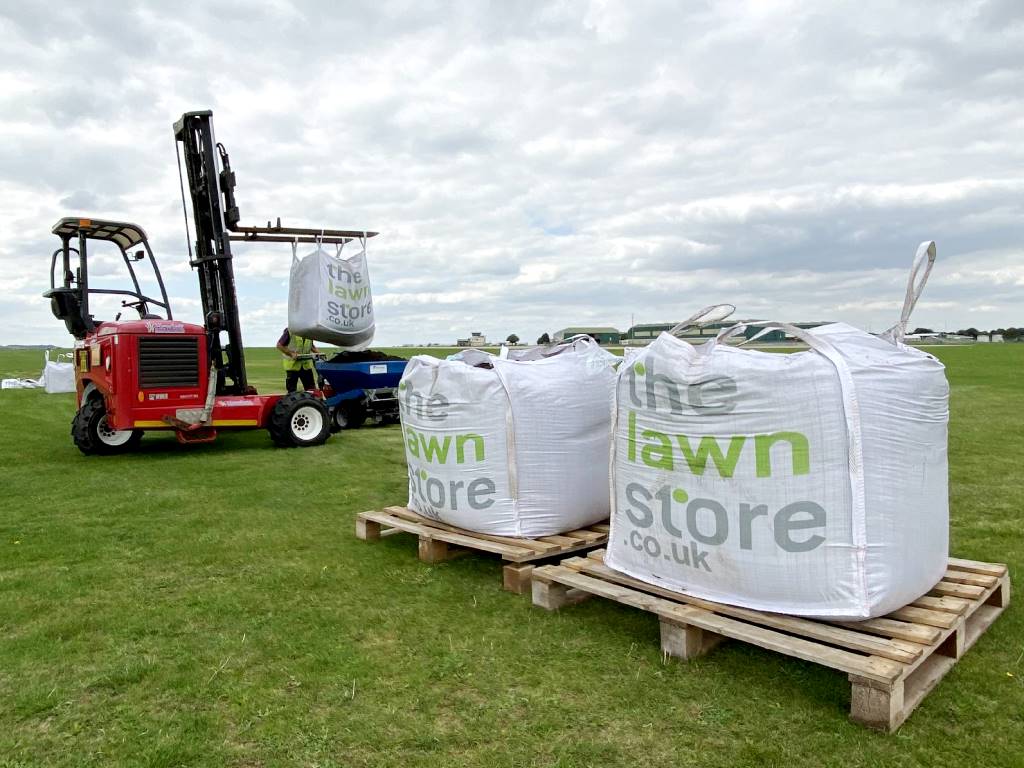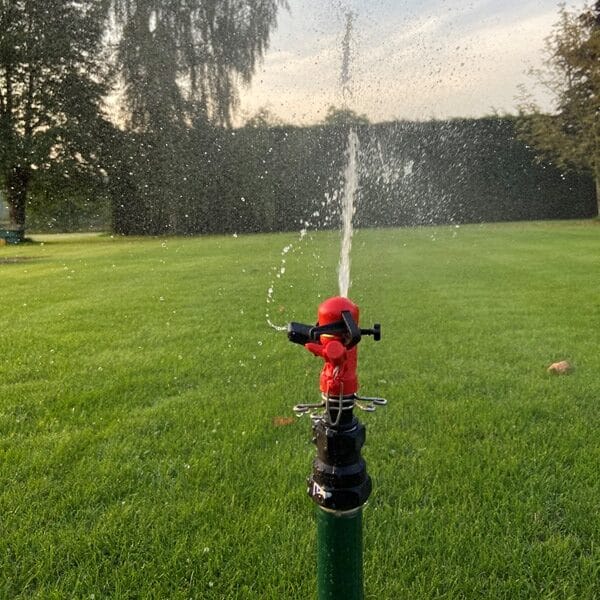Sowing a new lawn from seed is a great way of creating a cost effective lawn, but it important to consider the time of year you are doing it, carry out correct preparation and be patient as the lawn establishes over several months.
Lawn Seeding can be done by professional contractors such as Lawntechs’ sister company Hewlett Turf & Landscapes or you can do it yourself with a little time and effort.
Timing
Autumn is the best time to sown grass seed, (Mid August-October), whilst the soil is warm and damp which will assist speedy germination. Spring is the second best time, (April-May), but germination will be slower as the soil is cooler and there are disadvantages such as competition from weeds and dry weather as you move into the summer.
Tools & materials you will need: Rotovator, Garden fork, garden spade, shovel, wheelbarrow, soil rake, pre-seed fertiliser, grass seed, weed killer, weed killer applicator, sprinkler, garden hose.
Step 1 (to be done well in advance) – Kill Existing Vegetation: Kill off any vegetation such as weeds and grass with Glyphosate herbicide or similar systemic herbicide or thoroughly did out vegetation, or cover the area with a black plastic sheet several months prior. This will make life much easier for rotovating and will prevent unwanted weeds growing through the new turf.

Step 3 – Raking: Rake the soil down to create a fine smooth tilth to remove stones and particles which are larger than 20mm in size. Firm in the soil by treading up and down the area in between passes with the rake. Scrape off high points and fill in low areas with a shovel. Carry out final tilth with a finer rake. Contractors may use powered rakes and other specialist machinery. Remove all arising’s such as stones and debris from site. Remember it is crucial to get the soil as smooth and even as you want the final lawn to be. Always bring soil right up to the same level as any adjoining paving or edgings.
Step 4 –Fertiliser: Apply pre-turf/seed fertiliser @ 35 grams per square metre.

Step 6 – Watering: For best results newly sown seed must always remain moist and unless conditions are naturally damp. Water once twice per day for approximately 3-4 weeks depending on weather. Once germination occurs reduce watering unless conditions are very dry.
Step 7– First mow: Carry out the first mow on a high setting approximately 4-8 weeks after germination or once the new grass is about 2-3 inches long. The new seed will gradually thicken up and fill in over several months.
Step 8 – Aftercare
The new grass will gradually thicken up and fill in over several months. 70-80% of weeds tend to die off with regular mowing. Stubborn perennial weeds can be killed off with a selective herbicide after about 3 months or once the grass has matured to the 3 leaf stage. A gentle fertiliser programme using Lawn Store semi organic fertiliser will help the lawn to establish and keep it thick and healthy.







